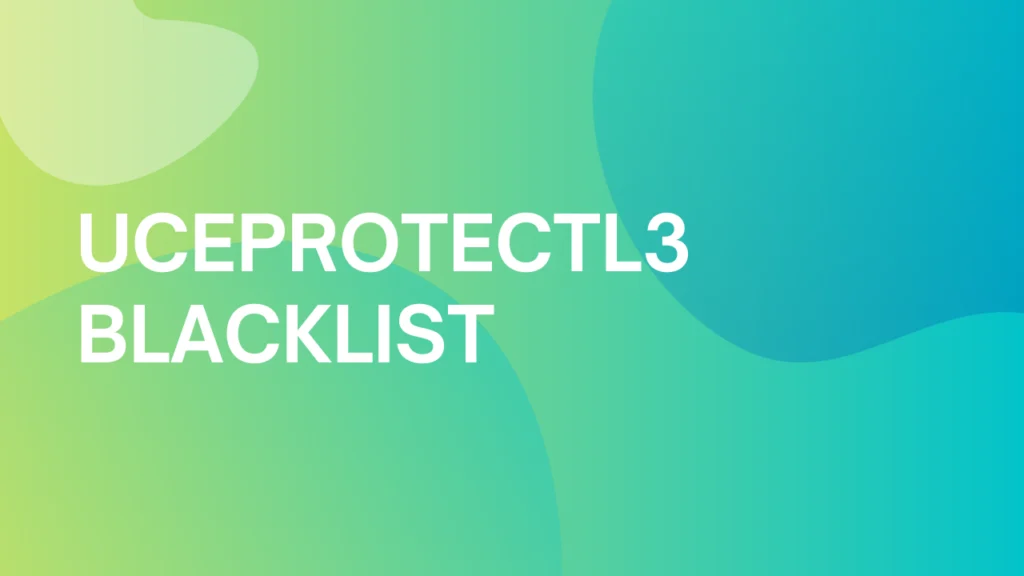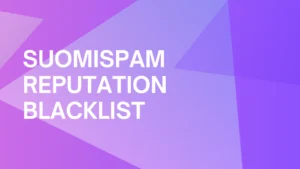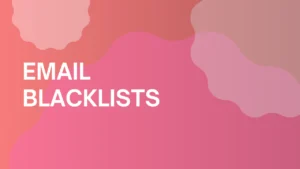
UCEPROTECTL3 Blacklist: What Is It and How To Remove Yourself From It
Dealing with the UCEPROTECTL3 Blacklist can be frustrating, especially when it impacts your email campaigns. This article offers a detailed look at the UCEPROTECTL3 list, covering:
- How it targets subnets and entire IP ranges
- Ways to check if your IP is listed
- Tips to stay off the blacklist and improve your email reputation
Whether you’re already listed or just looking to avoid trouble, this article has you covered!
What is a UCEPROTECTL3 Blacklist?
A UCEPROTECTL3 Blacklist works to flag IP Addresses from Internet Service Providers (ISPs) that have a bad reputation. It also maintains a report of subnets.
Subnet Blacklists come in handy when Internet Service Providers host entire companies that send bulk spam mail. Another duty of the UCEPROTECTL3 Blacklist is to list single IP Addresses that have multiple domains. If a company sends unsolicited bulk email (UBE), the entire range is in jeopardy of being blacklisted.
The UCEPROTECTL3 Blacklist has a primary goal of forcing administrators or ISPs to educate their users about email abuse and take preventative measures to stop it from happening.
The “L3” version is the most aggressive, targeting entire ISPs or autonomous system numbers (ASNs) whose networks have a history of abusive behavior.
Unlike typical blacklists that focus on individual IPs, UCEPROTECTL3 blocks entire ranges. That means even if you personally follow good email practices, you can get caught in the crossfire due to your provider’s poor reputation.
What Do UCEPROTECTL1, L2, and L3 Mean?
Here’s a quick breakdown of how UCEPROTECT’s tiers work:
| Level | Targets | Scope | Who’s Affected |
| L1 | Single IPs | Smallest | You, if your IP sends spam |
| L2 | IP subnets (e.g., /24 ranges) | Moderate | You, if neighbors on your subnet are spamming |
| L3 | Entire ISPs/ASNs | Broadest | You, if your provider has widespread abuse problems |
If you’re listed on L1, it usually means your specific IP was reported for spam. On L2, it might be others in your IP block who caused the issue. But L3 is almost entirely out of your control – it signals that your ISP or hosting provider is failing to manage abuse across its network.
How do I find out if I am on the UCEPROTECTL3 Blacklist?
The quickest way to check your status is to use our free tool below. Enter your domain or IP address to see if you’re listed on over 100 common email blacklists instantly.
You can also use blacklist monitoring tools like:
- MXToolbox Blacklist Checker
- MultiRBL.valli.org
- Warmup Inbox (sync an inbox to scan 20+ blacklists automatically)
Keep in mind: being on the L3 list doesn’t necessarily mean all email providers will block you. Some weigh UCEPROTECT heavily, others ignore it completely.
How Can I Remove Myself From The UCEPROTECTL3 Blacklist?
UCEPROTECT automatically removes IPs from the blacklist seven days after the last spam activity is reported. There’s no free manual removal option.
You can pay a “donation” to speed up removal, but this approach is:
- Controversial – many in the email community view this as a “pay-to-play” system.
- Ineffective long-term – If your ISP doesn’t fix its spam problems, you’ll likely be relisted again soon.
- Not a true fix – Delisting does not improve your IP or domain reputation with mailbox providers.
We strongly recommend focusing on long-term solutions rather than temporary workarounds.You can find out more about the removal process here.
How do I reduce my risk of getting onto the UCEPROTECTL3 Blacklist?
The best way to avoid getting listed on a blacklist is to engage in proper email practices such as…
- Verify all email addresses before attempting outreach
- Avoid sending unnecessary emails
- Avoid the use of spam words within your email drafts
- Keep your sending volume to a minimum (30-50 a day if you’ve been using an Email Warmup Service for at least 30 days)
Is UCEPROTECTL3 a legitimate blacklist?
UCEPROTECT is considered legitimate, but controversial:
- It casts a very wide net – especially at L3 – often penalizing innocent senders
- Some mail servers give it high weight when deciding to block or filter mail
- Others completely ignore it due to its aggressive scope and the availability of paid delisting
There’s an active discussion about its practices on forums like Reddit, where many users describe it as overly broad and commercially motivated. Still, if your target audience includes providers that respect UCEPROTECT, being listed can hurt deliverability.
Final thoughts
Being on the UCEPROTECTL3 blacklist doesn’t necessarily mean you did anything wrong. It usually reflects issues with your ISP’s network reputation. Here’s what you can do:
- Check if you’re listed
- Consider moving to a better host if problems persist
- Focus on clean, verified outreach practices
- Monitor your deliverability over time
If you’re using a service like Warmup Inbox, you’ll be alerted if any issues arise so you can stay ahead of problems before they escalate.
Related Terms:
- Unsolicited Bulk Email (UBE): Email sent to a large audience without their consent.
- IP: An Internet Protocol address is a numerical label assigned to each device connected to a computer network that uses the Internet Protocol for communication. An IP address serves two main functions: host or network interface identification and location addressing.



